How to Make a Tincture
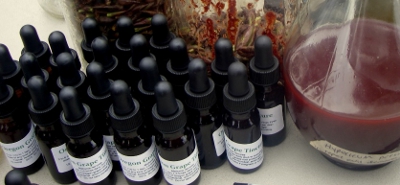
Learning how to make a tincture is a great way to preserve and use medicinal plants year round. Here are the advantages to using tinctures.
- Alcohol tinctures last 5+ years
- Vinegar tinctures will last at least 3 years
- Tinctures are great as part of an emergency first aid kit
- You only have to take a small amount, as a little goes a long way
- Tinctures absorb quickly into the body, especially when dropped under the tongue
The first thing you need to do in learning how to make a tincture is to:
- Properly and positively identify your plant of choice
- Make sure the plant is growing in abundance before you harvest it. Here at Alderleaf we recommend harvesting 1 out of every 20 plants
We want to make sure the supply of native plants will be there for years to come. Gather with a thankful attitude and acknowledge the life of the plants and it's abilities you seek to use.
Fresh herbs and plants make the best tinctures, and that is what I have used for the following demo. You can also use dried herbs as well. The ratios will vary a little bit depending on whether the herbs are fresh or dried.
This time, I will be using fresh hawthorn berries for an alcohol tincture to make a medicine that will strengthen the heart.
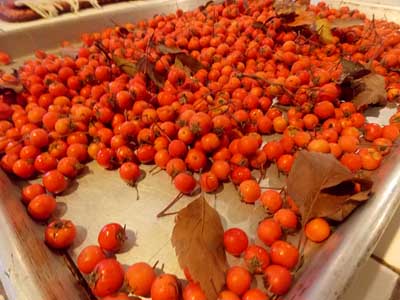
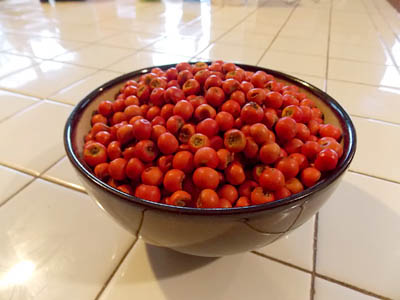
First, clean your fresh herbs of dirt and debris.
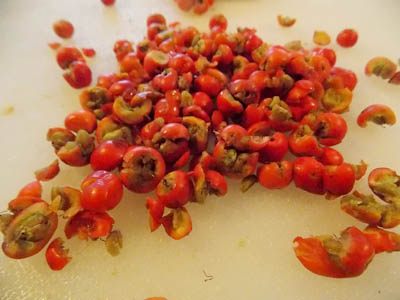
You want to coarsely chop up the plant material when you are using berries, bark, roots, or leaves for a tincture. The only type of plant material you don’t need to chop are flowers since they are so delicate.
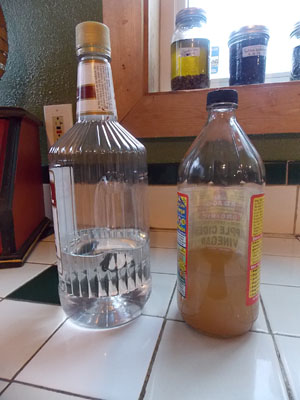
Next, choose your menstruum - the menstruum is the type of solvent you choose to use, such as alcohol, apple cider vinegar, or glycerin. This is a key part in how to make a tincture. Alcohol is used for barks, roots and woody plant materials. For more delicate leaves and flowers, apple cider vinegar is preferred. Apple Cider Vinegar itself is also very healing. When making tinctures for children, glycerin is often the best choice of menstruum.
Be More Prepared For Your Next Outdoor Adventure!

Don't leave home without knowing these six essential survival skills. Our free survival mini guide reveals the strategies of:
- Shelter & fire to prevent the number one cause of death
- Obtaining clean water to avoid life-threatening dehydration
- Common wild survival foods and other critical skills!

For most plant matter 100 proof grain alcohol content is good enough (which is 50% alcohol and 50% water). However you can use brandy, wine, gin or any kind of alcohol you want. Some plants will need the use of a strong grain alcohol because they require something powerful to extract their medicinal properties.
Dosages vary from plant to plant, so be sure to research your plant well and experiment with caution. An overdose can result in harm or even death with potent medicinal plants.
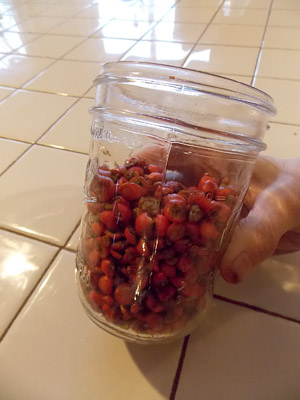
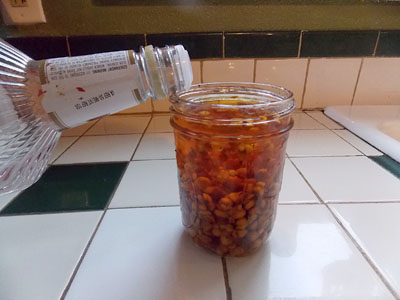
Once you have coarsely chopped your herbs you will want to put your herbs in a jar and add the menstruum. A quick and easy way of measurement is to fill your jar 1/3 of the way full of plant material and top it off with the menstruum of your choice. However the potency may vary with this method.
For consistency you can use the 1:2 and 1:5 ratios. That means for fresh herbs making a mix that is 1 part fresh herb to 2 parts alcohol, apple cider vinegar, or glycerine; and for dry herbs, using 1 part dry herb to 5 parts alcohol, apple cider vinegar, or glycerine (whatever your menstrum of choice is).
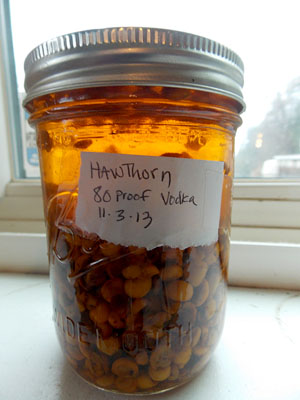
Don’t forget to label it! You should at least have the name of the plant, the percentage of your menstruum and what kind of menstruum you used as well as the date it was made.
Set the tincture in a cool dark place for 5-6 weeks, and make sure to shake it daily. Shaking is especially important for the first 2 weeks.
Once your tincture is has finished steeping for the 5-6 weeks, strain it and put into smaller bottles, label it and enjoy the benefits of your homemade tincture!
Additional Resources on How to Make a Tincture:
Guide to Making Tinctures - The Mountain Rose Blog
Related Courses:
Wild Edible & Medicinal Plants Courses at Alderleaf
By the way, when you're out foraging, it's important to know how to stay safe in the outdoors, especially if you were to get lost. Right now you can get a free copy of our mini survival guide here, where you'll discover six key strategies for outdoor emergencies, plus often-overlooked survival tips.

About the Author: Georgieann Lilgreen grew up living off the land in Alaska. She has taught classes and written articles at Alderleaf. Learn more about Georgieann Lilgreen.
Return from How to Make a Tincture back to Wild Plants Articles
Is The Essential Wilderness Survival Skills Course Right for You? Take the "Online Survival Training Readiness" Quiz
See for yourself if this eye-opening course is a good fit for you. It takes just a few minutes! Get your Survival Training Readiness Score Now!

Grow Your Outdoor Skills! Get monthly updates on new wilderness skills, upcoming courses, and special opportunities. Join the free Alderleaf eNews and as a welcome gift you'll get a copy of our Mini Survival Guide.

 The Six Keys to Survival: Get a free copy of our survival mini-guide and monthly tips!
The Six Keys to Survival: Get a free copy of our survival mini-guide and monthly tips!
Learn more